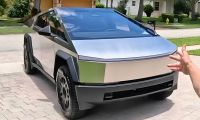Fixing Automotive Plastics
While I am not fond of jerry-rigging repairs, sometimes whether it’s because you can’t find the replacement part you need, the expense is too much, or you are on the road and in need of a quick fix, using a superglue-type of adhesive to take care of a broken plastic part at least temporarily is acceptable at times.
However, molded automotive plastics designed to withstand high temperatures and chemical corrosion are not the same type of plastics used in other items that you normally repair around the house with some generic or name brand of superglue to get the job done.
Some of the more common plastics you will find in cars include:
Polypropylene---a thermoplastic polymer that is easily manufactured into almost any shape. It is both chemical and heat resistant to a high degree (see what I did there) and is applicable toward high impact forces such as those experienced in car bumpers. It is also a good inexpensive plastic for vehicle carpet fibers.
Polyvinyl Chloride (PVC)—a malleable flame retardant plastic that is often used in dashboards and automotive body parts.
Polycarbonate---is another impact resistant plastic used in not just bumpers but headlights as well. Another feature of this plastic is that it is lightweight and very resistant to 4-season weather conditions.
Acrylonitrile Butadiene Styrene (ABS)---is similar to PVC in that the final product offers a sleek finish and is typically used in steering wheel covers and dashboards. It also has the property of absorbing and redistributing the energy during an impact, offering the driver and passengers some protection during an accident.
The Proof Is in The Putty
The point to listing some of the types of plastics used in cars is to provide an appreciation for the fact that when it comes to adhesives it’s really all about the chemistry of the adhesive and the surface(s) to be bonded. In other words, not all plastics are the same and therefore not all chemical adhesives will work on the same plastics. Furthermore, experience shows that when an adhesive label states that the superglue will work on a listed range of materials, it does not work equally well with all of the materials listed.
This is where I like to say (and recommend) that the proof is in the putty. In other words, just as you would use a cleaning product on a piece of test fabric to ensure damage will not ensue, it is prudent to test out any new adhesive on a scrap auto part of the same material as the broken piece to determine whether or not the adhesive will really work. You will also want to test the bonded test piece under similar real-life conditions such as heat---a small jar of boiling water will often suffice in such a test.
No Time (or inclination) for Testing?
That said, for those of us who have neither the time nor the inclination to do our own tests, here is a recent video from a trusted YouTube channel mechanic who reports that this is his go-to adhesive for car repairs. This is a sponsored video, so make out of that what you like, but it is as good as a source as any for some sense of confidence that this is a reliable product.
Here is the video in its entirety.
LOCTITE HY4070 Adhesive
And finally…
For additional articles about car repair and maintenance, here are two selected popular articles titled “Car Maintenance 101: Changing the Headlight on a Prius” and “Servicing Your Vehicle’s Automatic Transmission Can Be a DIY Project That Saves You Money.”
COMING UP NEXT: Consumer Reports 12 Best New Car SUV Deals for 2022
Timothy Boyer is a Torque News automotive reporter based in Cincinnati. Experienced with early car restorations, he regularly restores older vehicles with engine modifications for improved performance. Follow Tim on Twitter at @TimBoyerWrites for daily new and used vehicle news.
Image Source: Photo by Mart Production from Pexels











